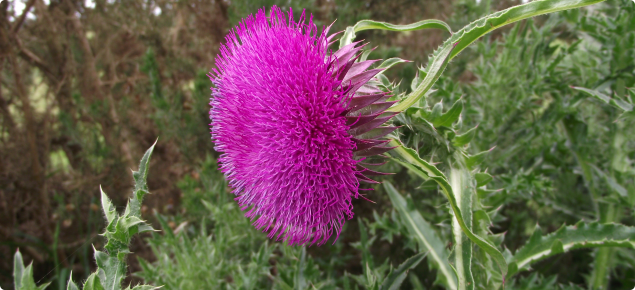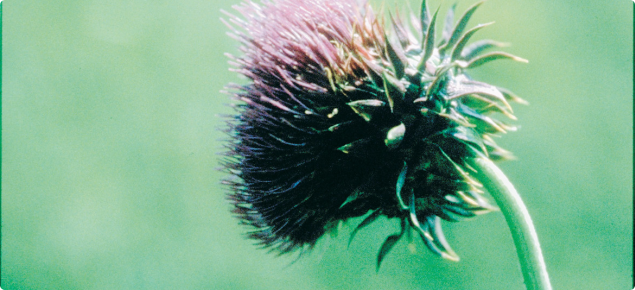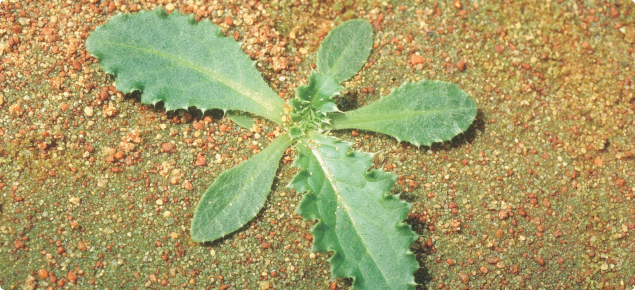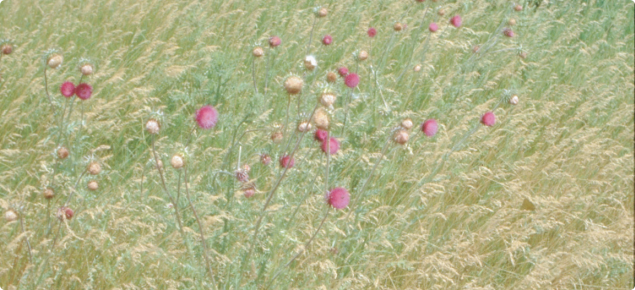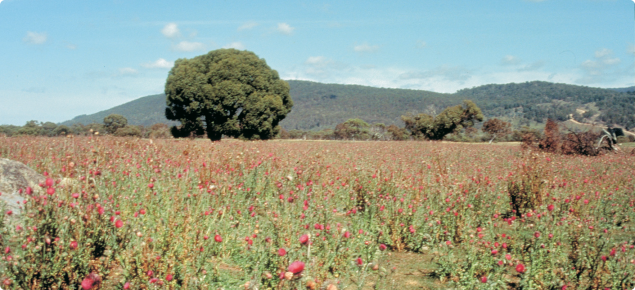Form: herbaceous — annual
Status: eradicated from WA
Biennial, tap-rooted thistle, native of Europe, Asia and North Africa, growing to 2.5 metres tall; a common weed in grasslands in south-eastern Australia; the only known population in Western Australia has been eradicated.
Appearance
Stems: spiny and winged except below the flower head.
Leaves: deeply lobed and spiny margined. Rosette leaves to 50 centimetres long, often with whitish mid-veins ending in a rigid spine about three millimetres long.
Flowers: large purple heads (2.5-5 centimetres across) that droop down or "nod" at maturity; flower head bracts end in a strong, sharp spiny tip. Flowers mostly spring to autumn.
Seeds: grey to yellowish-brown, three to four millimetres long, slightly curved, marked with longitudinal lines and faint dots. Pappus 15-25 millimetres long.
Online weed identification training
Login or set up a new account on DPIRDs online training site to access:
- a training course on how to identify nodding thistle and report it.
- training material that you can use to teach community groups how to identify nodding thistle.
Agricultural and economic impact
Nodding thistle can invade pastures. If not controlled it will form dense patches that greatly reduce carrying capacity as the spiny plants are not grazed by stock.
Declared pest category
The Western Australian Organism List (WAOL) contains information on the area(s) in which this pest is declared and the control and keeping categories to which it has been assigned in Western Australia (WA). Search for nodding thistle in the WAOL. using the scientific name Carduus nutans.
Requirements for land owners/occupiers and other persons
Requirements for land owners/occupiers and other persons if this pest is found can be sourced through the declared plant requirements link.
Search > detect > report
| MyPestGuide™ Reporter | Pest and Disease Information Service (PaDIS) |
Detectability: hard to find. In its early growth, nodding thistle is likely to be confused with other thistles that are well established in the South West Land Division, particularly spear thistle (Cirsium vulgare). It can be distinguished from other thistles when the flowers mature as they droop or ‘nod’ whereas other thistles have flowers that are more-or-less upright. Nodding thistle is quite robust and taller than other closely related species present in WA, up to 1.6 metres tall, where slender thistle (Carduus pycnocephalus) and sheep thistle (Carduus tenuiflorus) have relatively slender stems and both only get to about 1m tall.
Who should look for it: owners/managers of grass airstrips, particularly in the higher rainfall parts of the South West Land Division, and anyone who uses these airstrips. Owners of land that had Karoo canola planted in 1996 (as it had low levels of nodding thistle seed).
When to find it: nodding thistle is most conspicuous when the flowers have matured, usually in late spring and summer. If nodding thistle becomes established, rosettes could be potentially found at any time of year.
Where to find it: nodding thistle has only been found once in WA, on a grass airstrip used by spray planes from the Eastern States. While nodding thistle prefers calcareous soils and nitrogen rich soils, it can also grow on poor or acid soils. It may be found on properties where Karoo canola was planted in 1996. If it becomes established, nodding thistle is most likely to take off in improved pastures, where top-dressing of pastures has occurred, and in areas that are bare for all or part of the time, such as fencelines and around troughs. It is most likely to become established in the higher rainfall parts of the South West Land Division.
Control method
Control methods for this declared plant can be found through the nodding thistle control link.
Management calendar

